Best solutions for your business
Elevate your brand online with our expert digital marketing solutions. Boost visibility, engage audiences, and drive success.

Best solutions for your business
Elevate your brand online with our expert digital marketing solutions. Boost visibility, engage audiences, and drive success.

UI/UX Design
Mobile App Design
Landing Page Design
Logo Branding
Website Design
No-Code Development
Mobile App Development
Application Development
E-Commerce Solutions
Content Management
Search Engine Optimization
Social Media Marketing
Pay Per Click
Google Business Profile (GBP)
Email Marketing
Display Marketing
Content Strategy
What is included in our UI/UX design services?
When you partner with DigiSenseHub, you’ll gain access to our full range of UI/UX services. These services are designed to optimize every facet of your UI/UX including:

User Research
Understanding the target audience by gathering insights into their behaviors, preferences, and needs. This involves methods such as interviews, surveys, and competitor analysis.
User Research
Competitor analysis
Stakeholder interviews
Analyzing the company's goal
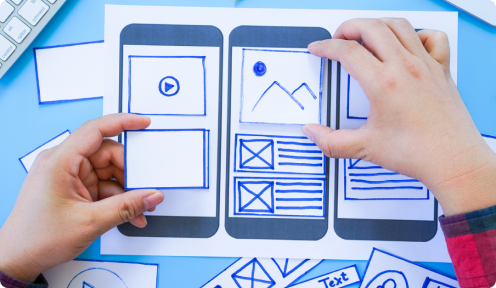
Information Architecture and Wireframing
Planning the structure and layout of the interface to ensure logical organization. Wireframing involves creating basic, low-fidelity sketches that outline the placement of elements without focusing on visual details.
Structure
Navigation
Content placement
Interaction
Usability

Prototyping and User Testing
Building interactive prototypes to simulate user interactions and workflows. User testing involves collecting feedback from users to identify usability issues and improve the design iteratively.
Color palettes
Typography
Imagery
Graphical Elements
Maintaining Visual Consistency
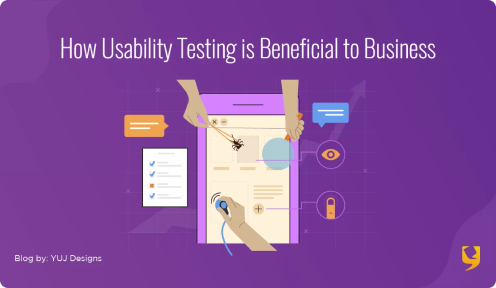
Visual Design
Creating a visually appealing design that aligns with the brand and enhances user engagement. This includes defining color schemes, typography, and overall aesthetics.
Usability Testing
Feedback Analysis
Iteration
Prototype Refinement
Final Design Production
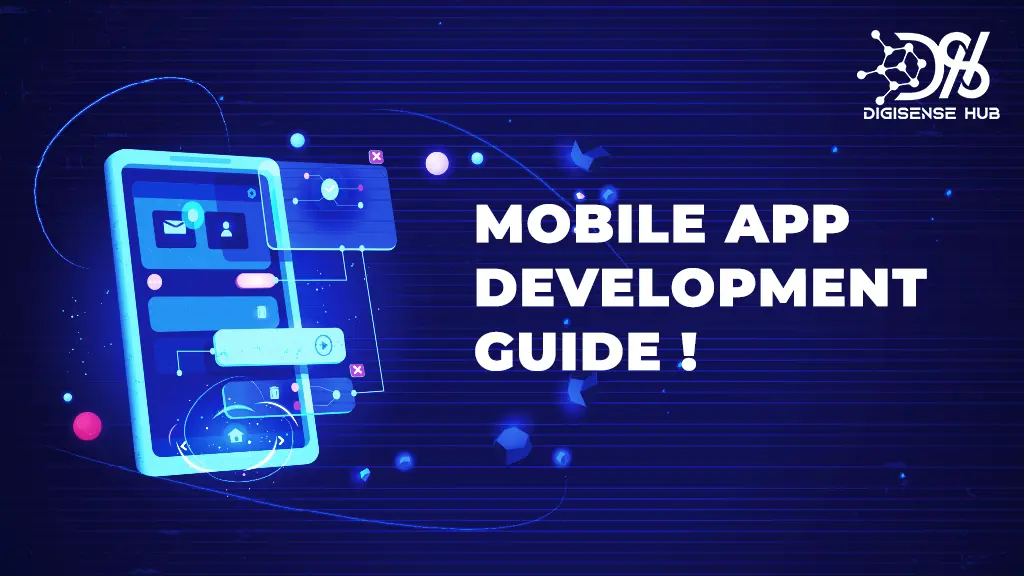
Responsive Design and Accessibility
Ensuring the design adapts seamlessly to various screen sizes and devices. Accessibility involves designing with consideration for users with diverse abilities, complying with accessibility standards.

Implementation and Iteration
Bringing the design to life by collaborating with developers for implementation. Iteration involves continuously monitoring user interactions, gathering feedback, and making improvements to enhance the user experience.
What is included in our mobile app design services?
When you partner with DigiSenseHub, you’ll gain access to our full range of mobile app design services. These services are designed to optimize every facet of your mobile app design including.

Research and Discovery
Understand client and user needs through research, defining project goals and understanding industry context.
Research and discovery fuel innovation and advancement
They explore uncharted areas and challenge existing assumptions.
New insights gained shape the future and drive progress.
Continuous learning through research promotes growth and development.
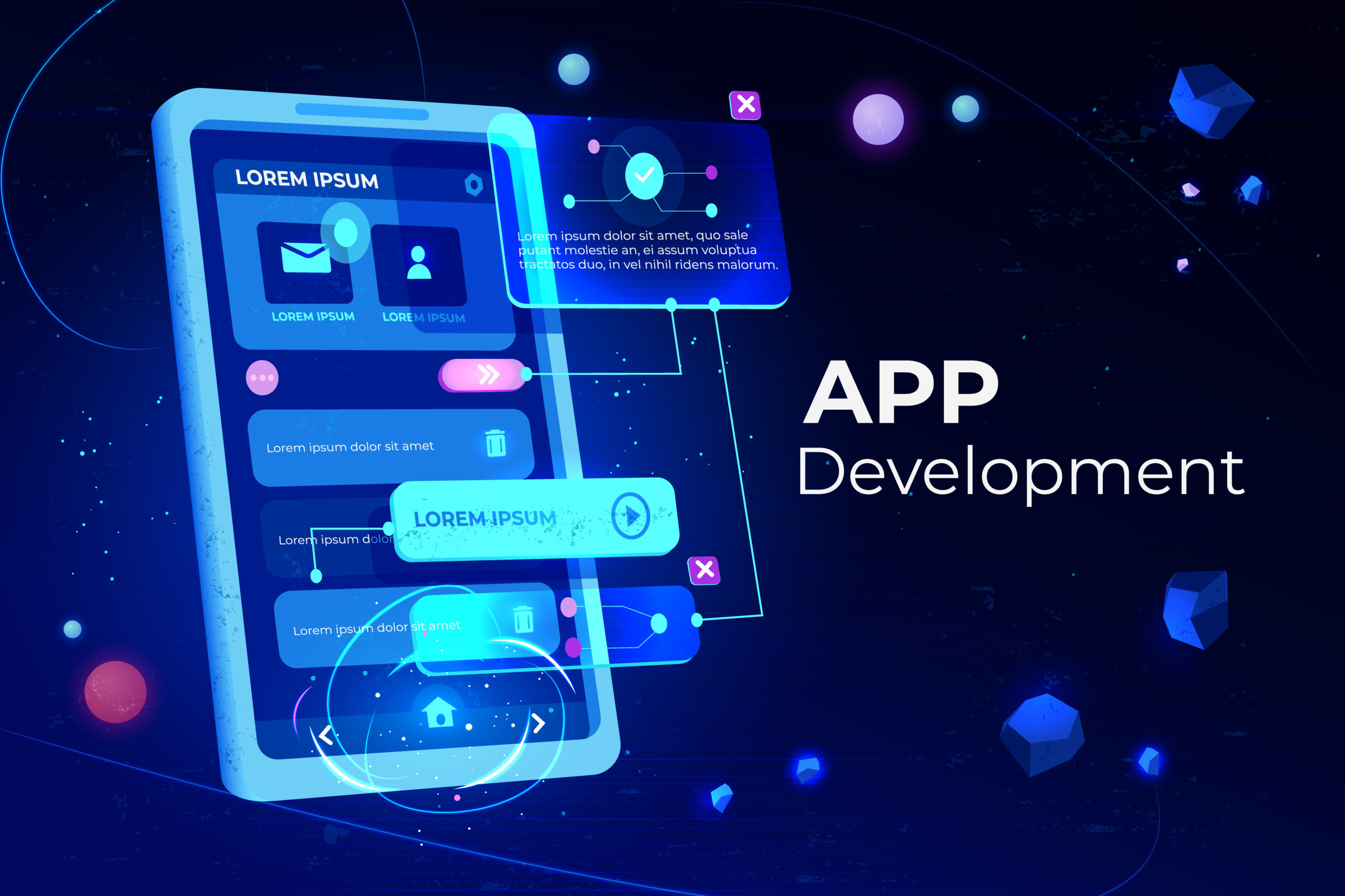
User Personas and Journey Mapping
Create detailed user personas and map their journeys to identify key touchpoints and pain points in the user experience.
User personas define target audience profiles.
They highlight user needs and behaviors.
Journey mapping shows the user's experience.
Both improve product design and satisfaction.

Wireframing and Prototyping
Develop wireframes for app structure and interactive prototypes for user testing, providing a blueprint for the user interface.
Wireframing outlines the structure of a design.
Prototyping brings the design to life for testing.
Both help visualize and refine user interactions.
They streamline the design process before development.

Visual Design
Apply a consistent visual identity with color, typography, and imagery, creating high-fidelity mockups to represent the final aesthetic.
Visual design enhances the look and feel of a product.
It focuses on aesthetics like color, typography, and layout.
Good design improves user experience and engagement.
It creates a cohesive and attractive brand identity.

User Testing and Iteration
Conduct usability testing with real users, gather feedback, and iterate designs to improve overall user experience
User testing gathers feedback on product usability.
It identifies issues and areas for improvement.
Iteration refines the product based on user insights.
Both ensure a better, user-centered final product.

Handoff and Collaboration with Developers
Prepare design assets for development and collaborate closely with developers to ensure seamless and accurate implementation of the design.
Handoff ensures designers provide clear specs to developers.
It includes sharing assets, guidelines, and documentation.
Collaboration fosters alignment between design and development.
Together, they ensure smooth implementation and a cohesive product.
What is included in our landing page design services?
When you partner with DigiSenseHub, you’ll gain access to our full range of landing page design services. These services are designed to optimize every facet of your landing including

Research and Analysis
Conduct thorough research on the target audience, competitors, and industry trends. Analyze existing data and gather insights to inform the design strategy.
Research gathers relevant data and insights.
Analysis interprets the data to identify patterns and trends.
Both guide informed decision-making.
They drive strategic improvements and innovation.

Goal Definition
Clearly define the goals of the landing page. Whether it's lead generation, product sales, or another objective, a precise goal guides the design elements and calls-to-action.
Goal definition sets clear objectives for a project.
It aligns team efforts toward a common vision.
Well-defined goals provide focus and direction.
They measure success and drive progress.

Wireframing and Layout Design
Develop a wireframe that outlines the structure and layout of the landing page. Plan the placement of key elements such as headlines, visuals, and CTAs to optimize user flow.
Wireframing outlines the basic structure of a design.
Layout design organizes visual elements for clarity.
Both focus on functionality and user flow.
They ensure a clean, user-friendly interface.

Visual Design
Create a visually appealing design that aligns with the brand identity. Select color schemes, fonts, and imagery that resonate with the target audience and enhance the overall user experience.

Content Creation
Craft compelling and concise content that communicates the value proposition clearly. From headlines to body text and CTAs, every element should contribute to engaging visitors and encouraging action.
Content creation delivers valuable information to the audience.
It includes writing, visuals, and multimedia.
High-quality content engages and informs users.
It drives brand awareness and audience interaction.

Testing and Optimization
Implement A/B testing to assess different design elements and content variations. Analyze user behavior and feedback to continuously optimize the landing page for improved performance and conversion rates.
Testing identifies issues and areas for improvement.
Optimization fine-tunes performance based on results.
Both ensure a seamless and efficient user experience.
Continuous improvement leads to better outcomes and satisfaction.
What is included in our logo & branding services?
When you partner with DigiSenseHub, you’ll gain access to our full range of logo & branding services. These services are designed to optimize every facet of your logo & branding including

Research
Understand the business, target audience, and industry to inform the design process.

Conceptualization
Brainstorm and develop creative ideas for the logo and overall brand identity.

Design
Create visual elements, including the logo, color schemes, typography, and other brand assets.

Feedback
Gather input from stakeholders and potential users to refine and improve the designs.

Refinement
Make necessary adjustments based on feedback, ensuring the final design aligns with the brand's objectives.

Implementation
Roll out the finalized logo and branding across various platforms, maintaining consistency for effective brand communication.
What is included in our website design services?
When you partner with DigiSenseHub, you’ll gain access to our full range of website design services. These services are designed to optimize every facet of your website design including
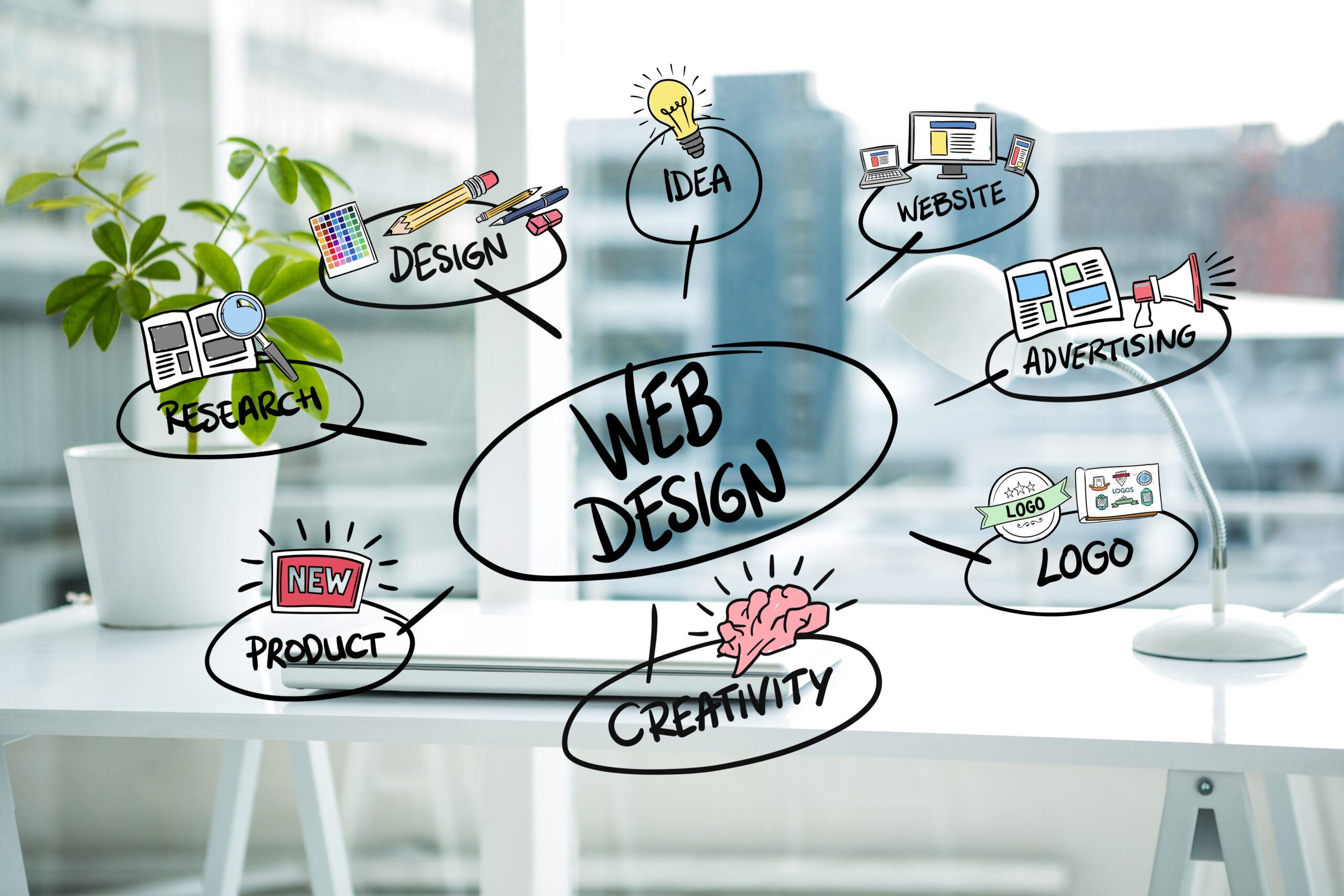
Planning
The initial phase where website goals, structure, and content are outlined, creating a roadmap for the design process.
Planning sets clear goals and strategies.
It organizes tasks and resources efficiently.
Effective planning prevents delays and confusion.
It ensures smooth execution and successful outcomes.
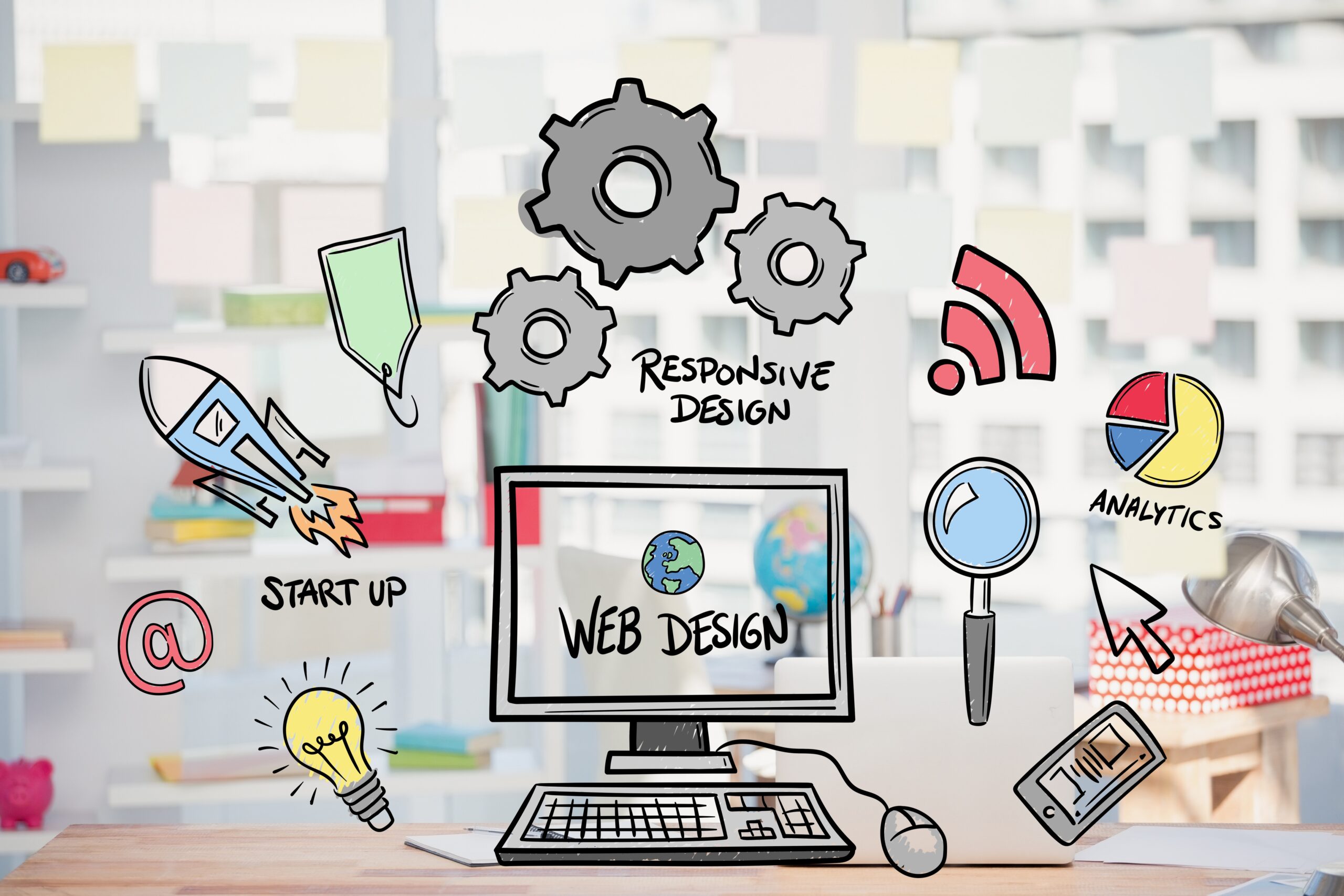
Design
The creative stage involving wireframes and design mockups to visualize the website's layout, color schemes, and overall appearance.
Design shapes the visual and functional aspects of a product.
It focuses on aesthetics, usability, and user experience.
Good design balances creativity with practicality.
It communicates the brand and engages users effectively.

Content Creation
Developing and gathering text, images, and multimedia content, ensuring alignment with the design and user experience goals.
Content creation develops meaningful and engaging material.
It includes text, images, videos, and other media.
Quality content connects with and informs the audience.
It strengthens brand presence and drives engagement.

Development
Writing code to implement the design and functionality, using languages like HTML, CSS, and JavaScript, with a focus on responsiveness and compatibility.
Development transforms designs into functional products.
It involves coding, testing, and debugging.
Good development ensures performance and usability.
It brings the project to life through technical execution.

Testing
Thoroughly checking the website's functionality, performance, and compatibility, identifying and resolving bugs or issues.
Testing identifies bugs and performance issues.
It ensures the product meets quality standards.
Thorough testing enhances user experience and reliability.
It helps deliver a polished, error-free product.

Launch
Deploying the website to a hosting server, conducting final checks, and officially announcing its release to the public.
Launch introduces the product to users.
It involves finalizing and deploying the release.
Effective launch includes marketing and support.
It aims to generate excitement and drive initial adoption.
What is included in our no-code-development services?
When you partner with DigiSenseHub, you’ll gain access to our full range of no-code-development services. These services are designed to optimize every facet of your no-code including.

Define Requirements
Clearly outline the problem and specify the features and functionalities you want in your application.
Defining requirements establishes clear project goals.
It outlines functional and technical needs
Clear requirements guide the design and development process.
They ensure alignment between stakeholders and the project team

Choose a No-Code Platform
Select a no-code development platform that suits your needs.
Choosing a no-code platform simplifies development without coding.
It offers drag-and-drop tools for easy customization.
The right platform supports scalability and flexibility.
It empowers non-technical users to build and manage solutions.

Design the User Interface (UI)
Use visual tools to create the look and layout of your application's user interface without writing code.
UI design focuses on the layout and appearance of the product.
It ensures a user-friendly and intuitive experience.
Good UI design enhances accessibility and engagement.
It aligns with brand aesthetics and functionality.

Configure Functionality
Set up the application's behavior and features by configuring settings and connecting components.
Configuring functionality sets up the core features of the product.
It ensures the system performs tasks as intended.
Proper configuration enhances user experience and efficiency.
It aligns the product's capabilities with user needs.

Test the Application
Use built-in testing tools to ensure the application works as intended, checking UI, workflows, and data interactions.

Deploy and Maintain
Release your application on the chosen platform and monitor its performance, addressing issues and updating as necessary.
What is included in our mobile app development services?
When you partner with DigiSenseHub, you’ll gain access to our full range of mobile app development services. These services are designed to optimize every facet of your mobile app design including:

Planning and Research
This stage involves understanding the project requirements, identifying the target audience, and conducting market research. It includes defining the app's features, functionality, and overall goals. Planning also includes creating wireframes or prototypes to visualize the app's structure.
Planning defines project scope, goals, and timelines.
Research gathers data and insights to inform decisions.
Together, they set a clear direction and strategy.
Both minimize risks and optimize project success.

Design
In the design phase, the app's user interface (UI) and user experience (UX) are developed. This includes creating visual elements, such as layouts, color schemes, and graphical assets. Designers focus on making the app visually appealing, intuitive, and user-friendly based on the target audience and the app's purpose.
Design shapes the product’s visual and functional aspects.
It balances aesthetics with usability for a seamless experience.
Good design enhances engagement and user satisfaction.
It ensures consistency with brand identity and goals.

Development
This is the phase where the actual coding and programming of the mobile app take place. Developers use the chosen programming languages (e.g., Swift for iOS, Java/Kotlin for Android) and frameworks to build the app's functionality. The development process also involves integration with databases, servers, and third-party APIs.
Development builds the product’s core functionality.
It involves coding, integration, and testing.
Quality development ensures performance and reliability.
It brings the design to life through technical execution.
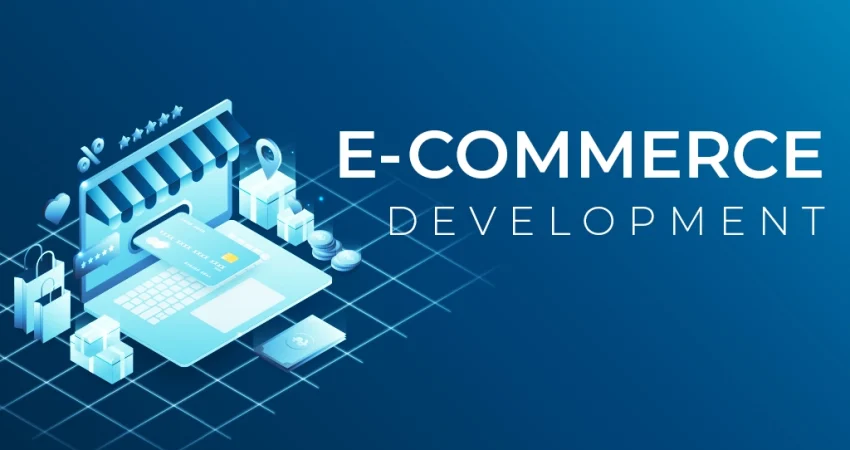
Testing
Testing is a crucial step to identify and fix bugs, glitches, and other issues in the app. It includes various types of testing, such as functional testing, performance testing, usability testing, and security testing. Testing ensures that the app works as intended and provides a positive user experience across different devices and platforms.
Testing identifies bugs and usability issues.
It ensures the product meets quality and performance standards
Rigorous testing improves reliability and user satisfaction.
It validates the product before launch to ensure readiness.

Deployment
Deployment involves making the app available to users. For mobile apps, this typically means publishing the app on the respective app stores (e.g., Apple App Store, Google Play Store). Developers need to adhere to the guidelines and requirements of each platform and ensure that the app meets the necessary standards for distribution.
Deployment releases the product to users.
It involves setting up the live environment and configurations.
Successful deployment ensures smooth user access.
It marks the transition from development to real-world use.

Maintenance and Updates
Once the app is live, it requires ongoing maintenance to address issues, release updates, and add new features. This phase involves monitoring user feedback, addressing bug reports, and keeping the app compatible with the latest operating system versions. Regular updates help improve the app's performance, security, and user experience.
Maintenance addresses ongoing issues and ensures stability.
Updates introduce new features and improvements.
Regular maintenance keeps the product functional and secure.
Updates enhance user experience and adapt to evolving needs.
What is included in our application development services?
When you partner with DigiSenseHub, you’ll gain access to our full range of application development services. These services are designed to optimize every facet of your application development including:

Requirement Gathering
Identify and document the specific needs and features that the application must address.

Design
Create a detailed plan outlining the architecture, user interface, and data structures of the application.

Implementation (Coding)
Write the actual code based on the design specifications, following coding standards and best practices.

Testing
Conduct thorough testing, including unit testing, integration testing, and system testing, to identify and address defects.

Deployment
Prepare and release the application into the target environment, whether on-premises or in the cloud.

Maintenance and Support
Provide ongoing support, addressing issues, implementing updates, and optimizing the application's performance.
What is included in our E-commerce services?
When you partner with DigiSenseHub, you’ll gain access to our full range of paid E-commerce services. These services are designed to optimize every facet of your E-commerce solutions including:

Establish Online Presence
Create a user-friendly website or online storefront to showcase products or services.

Product Listing and Display
Upload and organize products with clear descriptions, images, and prices for customer viewing.

Secure Transaction Processing
Implement reliable and secure payment gateways to facilitate smooth and secure online transactions.

Inventory Management
Track and manage product inventory in real-time, ensuring accurate stock levels and avoiding over-selling.

Order Fulfillment
Efficiently process and fulfill customer orders, including packaging, shipping, and delivery.

Customer Support and Feedback
Provide customer support channels and gather feedback to enhance the overall e-commerce experience and address any issues promptly.
What is included in our content management services?
When you partner with DigiSenseHub, you’ll gain access to our full range of content management services. These services are designed to optimize every facet of your content management including:

Requirements Analysis
Understand and document the requirements for the CMS. This involves gathering information about the features, functionalities, and goals of the CMS. Identify the target audience, content types, user roles, and any specific needs or constraints.
Requirements analysis identifies and defines project needs.
It ensures alignment between stakeholders and technical teams.
Clear requirements guide development and reduce miscommunication.
It lays the foundation for a successful project outcome.

Planning and Design
Create a detailed plan for the CMS development project. This includes defining the architecture, database structure, and user interfaces. Design the user experience (UX) and user interface (UI) components. Determine how content will be stored, organized, and retrieved.
Planning sets project goals, timelines, and resources.
Design translates requirements into visual and functional layouts.
Together, they ensure a clear roadmap for development.
Both minimize risks and align the team for smooth execution.

Development
Implement the CMS based on the specifications and design. This involves coding the backend functionality, creating the database schema, and developing the frontend interfaces. Depending on the complexity, development may be done using various programming languages and frameworks.
Development builds the product’s core functionality.
It involves coding, integration, and testing.
Quality development ensures performance and reliability.
It brings the design to life through technical execution.

Testing
Perform thorough testing of the CMS to identify and address any bugs, errors, or issues. This includes functional testing to ensure all features work as intended, security testing to identify vulnerabilities, and performance testing to assess the system's responsiveness and scalability.
Testing identifies bugs and usability issues.
It ensures the product meets quality and performance standards.
Rigorous testing improves reliability and user satisfaction.
It validates the product before launch to ensure readiness.

Deployment
Once testing is successful, deploy the CMS to the production environment. This involves configuring servers, databases, and other necessary components. Set up any required integrations, and ensure that the CMS is ready for use by content creators and administrators.
Deployment releases the product to users.
It involves setting up the live environment and configurations
Successful deployment ensures smooth user access.
It marks the transition from development to real-world use.

Maintenance and Updates
Regularly maintain and update the CMS to address issues, enhance features, and ensure security. Provide ongoing support to users and administrators. Monitor system performance and make optimizations as needed. Additionally, consider user feedback for future updates and improvements.
Maintenance ensures the product remains functional and secure.
Updates introduce new features and improvements.
Regular maintenance resolves bugs and performance issues.
Updates keep the product relevant and user-friendly.
Achieve Higher Rankings with Our Comprehensive SEO Strategies
Digisense Hub is a premier SEO company that recognizes the unique nature of each business. We understand that every business has its own distinctive factor that sets it apart from others. Therefore, we do not employ the same SEO strategies for every client project. Our specialty lies in creating custom-designed SEO campaigns for each client, ensuring that we listen to their needs and budget constraints. At Digisense Hub, we take pride in our expert team of writers, consultants, designers, and developers who collaborate to create strategies that fulfill our clients’ objectives and goals. With our tailored approach and dedication to understanding our clients’ businesses, we strive to deliver exceptional results that drive growth and success.
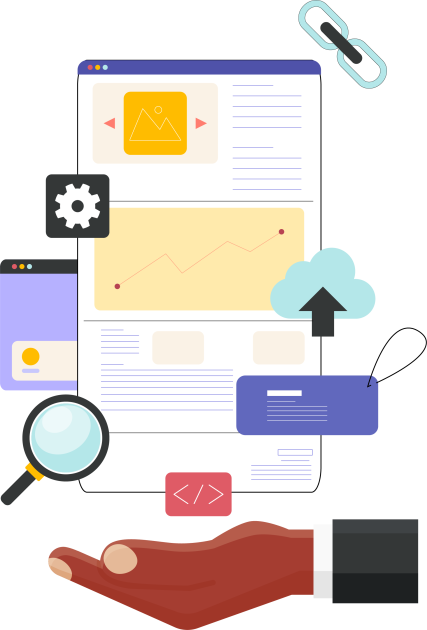
Why is SEO Important for your business?
Increased Visibility and Traffic: SEO helps your website rank higher in search engine results pages (SERPs), making it more likely that users will click on your site. This increased visibility can lead to more organic traffic.
Better User Experience: SEO involves optimizing your website for both search engines and users. This includes improving site speed, mobile responsiveness, and providing valuable, relevant content. A well-optimized site provides a better user experience, leading to higher engagement and conversions.
Cost-Effective Marketing: Compared to traditional advertising methods, SEO is cost-effective and offers a higher ROI. Once your website ranks well, you can continue to receive organic traffic without additional ad spend.
Builds Credibility and Trust: Websites that rank higher in search results are perceived as more credible and trustworthy by users. By optimizing your site for SEO, you can build credibility with your audience and establish your brand as an authority in your industry.
Competitive Advantage: SEO allows you to stay ahead of your competition. By optimizing your website for relevant keywords and providing valuable content, you can outrank competitors in search results and attract more customers.

Boost Your Business Through Affordable SEO Services
Navigating the path to your digital goals can be daunting. You know what you want, but the journey there isn’t always clear. This is a familiar challenge for many of our clients. While numerous top SEO companies charge exorbitant fees, we believe in a different approach. Why invest when results aren’t guaranteed? At Digisense Hub, we understand that SEO is a long-term commitment, requiring steadfast strategies. As the leading SEO services company, we offer a different promise. When you partner with us, you can trust in stable and superior results. Our affordable SEO services for small businesses have empowered countless ventures, expanding their online presence, generating leads, and boosting revenue.

Our SEO Work Process
With a dedicated team of professionals, we ensure 360-degree solutions to our valuable clients through our bespoke, industry-focused, and cost-efficient SEO services. The following is included in our SEO work:

Website Audit
Before implementing the best SEO practices, it is extremely important to do website auditing. It helps identify on-page and off-page seo problems, check for broken links, and a lot more.

Link Building
Backlinks are a vital component of ranking higher in SERPs, but not just any link! Expert assistance can help you determine what should and should not be done for link building.

Keyword Research and Analysis
We understand your niche and can help you to boost your ranking with our extensive keyword research process. The keywords we target, drive relevant traffic to your website.

SEO Content Creation
Content is the king! Content is the most important website element that can make or break your business in no time. Therefore, Our seo content writing services make your content readable and engaging.

Reporting & Analysis
A well-maintained website is all you need in today’s cut-throat competition! Hence, we provide our clients with detailed monthly reports on visibility, analytics, conversions, and revenues.

Keyword and URL Optimization
We help you optimize keywords and URLs for your website to ensure Google crawlers find them while using keywords relevant to your services.
What is included in our social media marketing services?
When you partner with DigiSenseHub, you’ll gain access to our full range of paid SMM services. These services are designed to optimize every facet of your SMM including:

Set Objectives
Clearly define your goals, whether it's increasing brand awareness, driving website traffic, or boosting engagement.

Audience Research
Identify and understand your target audience to tailor content and strategies that resonate with them.

Content Strategy
Develop a plan for creating and curating relevant, valuable content that aligns with your brand and appeals to your audience.

Platform Selection
Choose the social media platforms that align with your audience and goals. Each platform has unique demographics and features.

Implementation
Execute your strategy by creating and scheduling content, engaging with your audience, and possibly utilizing paid advertising.
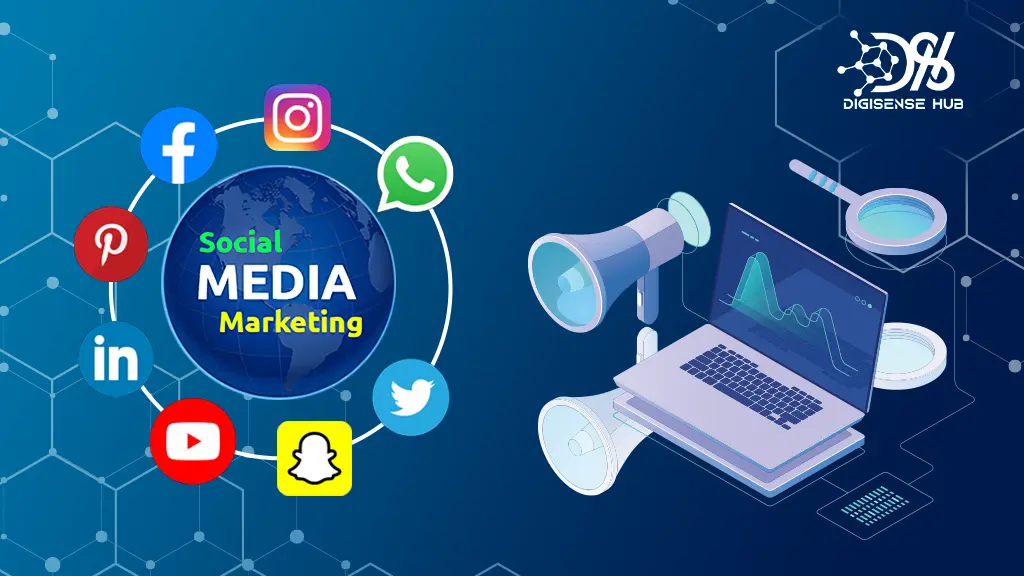
Analytics and Optimization
Regularly analyze performance metrics, such as engagement, reach, and conversions. Use insights to refine your strategy for better results.
What is included in our pay per click services?
When you partner with DigiSenseHub, you’ll gain access to our full range of paid PPC services. These services are designed to optimize every facet of your PPC including:

Keyword Research
Identify relevant keywords related to your products or services that potential customers might use in search queries.
Keyword research identifies relevant search terms for content.
It helps optimize visibility and reach in search engines.
Effective research targets user intent and trends.
It guides content strategy and improves SEO performance.

Ad Creation
Develop compelling and relevant ad copy, including headlines and descriptions, tailored to the chosen keywords and target audience.
Ad creation involves designing engaging and effective advertisements.
It focuses on compelling visuals and persuasive messaging.
Well-crafted ads capture attention and drive action.
Ad creation aligns with marketing goals and target audience needs.

Campaign Setup
Organize your ads into campaigns and ad groups, specifying settings such as budget, bid strategy, and targeting criteria.
Campaign setup organizes and configures advertising efforts.
It includes defining goals, budgets, and targeting criteria.
Proper setup ensures effective ad delivery and tracking.
It aligns campaign elements with overall marketing strategy.

Bid Management
Set bids for your selected keywords, determining the maximum amount you are willing to pay for a click. Adjust bids based on performance and competition.
Bid management optimizes bidding strategies for ad placements.
It involves setting and adjusting bids to maximize ROI.
Effective management balances cost and visibility.
It ensures efficient use of advertising budgets.

Monitoring and Optimization
Continuously monitor the performance of your ads, analyzing metrics like click-through rates, conversions, and return on ad spend. Optimize campaigns by adjusting keywords, ad copy, and targeting to improve results.
Monitoring tracks ad performance and key metrics.
Optimization adjusts strategies based on data insights.
Both ensure ads achieve desired results and improve over time.
They enhance efficiency and maximize campaign effectiveness.

Reporting and Analysis
Regularly generate reports to assess the overall success of your PPC campaigns. Use insights gained to refine strategies, allocate budgets effectively, and inform future campaign decisions.
Reporting compiles data on campaign performance.
Analysis interprets this data to understand outcomes and trends.
Both provide insights for informed decision-making.
They help refine strategies and improve future campaigns.
ROI-Driven Google Business Profile
Google My Business is important because it directly impacts a business's online visibility, credibility, and engagement with customers, especially in local searches. It serves as a powerful tool for connecting businesses with their target audience and establishing a strong online presence. Having an up-to-date and accurate Google My Business profile is crucial for local businesses as it helps improve their visibility in local search results and provides customers with the information they need to connect with the business. Google My Business (GMB) is of paramount importance for businesses in the digital age, particularly for those operating at the local level. Serving as a central hub for a business's online presence, GMB offers a multitude of advantages that significantly impact visibility, credibility, and customer engagement. First and foremost, GMB enhances local visibility. When potential customers perform local searches, businesses with optimized GMB profiles are more likely to appear in the search results and Google Maps, increasing the likelihood of attracting nearby customers. This local search optimization is crucial in an era where consumers increasingly rely on online searches to find products and services in their vicinity.

Local Visibility
GBP helps improve the local visibility of businesses in Google Search and Google Maps. When potential customers search for products or services in a specific location, businesses with optimized GBP profiles are more likely to appear in the local search results.

Online Presence
A GBP profile serves as an essential component of a business's online presence. It provides a snapshot of key information such as business hours, location, contact details, and website, making it easy for customers to find and engage with the business.

Customer Trust and Credibility
A complete and accurate GBP profile enhances the credibility of a business. Customers are more likely to trust a business that has a verified and well-maintained presence on Google, including positive reviews, accurate information, and engaging photos.

Customer Reviews
GBP allows customers to leave reviews and businesses to respond to them. Positive reviews can attract new customers, while responding to negative reviews demonstrates transparency and a commitment to customer satisfaction.

Mobile Search Optimization
With the increasing use of mobile devices for local searches, having a GBP ensures that businesses are easily discoverable on smartphones and tablets. This is particularly important for attracting nearby customers.

Insights and Analytics
GBP provides valuable insights into how customers find and interact with a business online. This data can help businesses understand their audience, track the performance of their online presence, and make informed decisions to improve their strategies.

Google Maps Integration
GBP is closely integrated with Google Maps, making it convenient for customers to locate and navigate to a business's physical location. This is crucial for businesses with brick-and-mortar stores or offices.

Promotional Opportunities
Businesses can use GBP to create posts, share updates, and promote special offers. This allows them to keep customers informed and engaged, encouraging repeat business.
What is included in our email marketing services?
When you partner with DigiSenseHub, you’ll gain access to our full range of paid email marketing services. These services are designed to optimize every facet of your email marketing including:

Define Campaign Objectives
Clearly outline the goals of your email marketing campaign, whether it's driving sales, increasing brand awareness, or nurturing leads.
Defining campaign objectives sets clear, measurable goals.
Objectives align with overall business and marketing strategies.
Clear goals guide ad creation and targeting efforts.
They provide a basis for evaluating campaign success.

Build and Segment Your Email List
Develop a quality email list and segment it based on factors such as demographics, behavior, or purchase history. This allows for personalized and targeted communication.
Building your email list involves collecting subscriber contacts.
Segmenting the list categorizes subscribers based on interests or behavior.
Both ensure targeted and personalized email campaigns.
They improve engagement and effectiveness of email marketing efforts.

Create Compelling Content
Craft engaging and relevant content for your emails, including compelling subject lines, valuable information, and clear calls-to-action. Design emails to be visually appealing and mobile-friendly.
Create compelling content that captures attention and resonates with the audience.
Focus on relevance, clarity, and value
Use engaging visuals and persuasive language.
Content should drive action and support campaign objectives.

Set Up and Send Campaigns
Utilize email marketing tools to set up and send your campaigns. Ensure emails are delivered at optimal times and test different elements, such as subject lines and visuals, for effectiveness.
Set up campaigns by configuring email design, subject lines, and scheduling.
Segment the audience for targeted delivery.
Send campaigns at optimal times for maximum engagement.
Monitor delivery and open rates to gauge success.

Monitor and Analyze Performance
Track key metrics like open rates, click-through rates, and conversion rates. Use analytics to understand subscriber behavior and the success of your campaigns.
Monitor performance to track key metrics and user engagement.
Analyze data to understand campaign effectiveness and areas for improvement.
Use insights to refine strategies and enhance future campaigns.
Regular evaluation ensures alignment with goals and better results.

Optimize and Iterate
Based on performance data, continually optimize your email marketing strategy. Adjust content, timing, and targeting to improve engagement and achieve better results with each subsequent campaign.
Optimize campaigns based on performance data and feedback.
Make adjustments to improve effectiveness and efficiency.
Iterate by testing new strategies and approaches.
Continuous refinement ensures better results and aligns with objectives.
What is included in our display marketing services?
When you partner with DigiSenseHub, you’ll gain access to our full range of paid display marketing services. These services are designed to optimize every facet of your display marketing including:

Define Goals and Objectives
Clearly outline the goals and objectives of your display marketing campaign, whether it's increasing brand awareness, driving website traffic, or boosting sales.
Define clear, measurable goals for direction and focus.
Align objectives with overall business or project strategy.
Specific goals guide decision-making and resource allocation.
Well-defined objectives help track progress and measure success.

Audience Segmentation
Identify and segment your target audience to tailor your display ads to specific demographics, interests, and behaviors for more effective targeting.
Audience segmentation divides users into distinct groups.
It is based on demographics, behavior, or preferences.
Segmentation allows for more personalized and targeted messaging.
It improves engagement and overall campaign effectiveness.
Creative Development
Design visually compelling and relevant ad creatives, including banners, images, and videos, that align with your brand and resonate with the chosen audience segments.
Creative development involves turning ideas into tangible concepts.
It focuses on content creation, design, and brand storytelling.
Visual elements are crafted to enhance brand identity.
Prototypes are tested and refined for final implementation.

Ad Placement and Targeting
Strategically place your display ads on websites, apps, or social media platforms frequented by your target audience. Utilize targeting options to ensure your ads are shown to the right people.
Ad placement selects optimal platforms for displaying ads.
Targeting ensures ads reach specific audiences based on data
It uses demographics, interests, and behaviors to tailor ads.
Effective placement maximizes visibility and engagement.

Campaign Launch and Monitoring
Launch your display marketing campaign and closely monitor key performance indicators (KPIs) such as click-through rates, impressions, and conversions to assess the initial impact.
Campaign launch initiates the rollout of marketing strategies.
Monitoring tracks performance through key metrics and analytics.
Adjustments are made based on real-time data and insights.
Continuous monitoring ensures the campaign stays on target and effective.

Optimization and Reporting
Continuously optimize your campaign based on performance data. Adjust targeting, creative elements, and budget allocation as needed. Provide regular reports to track progress and inform future decisions.
Optimize campaigns using data insights.
Make strategic adjustments for better results.
Report on campaign performance.
Provide metrics and future recommendations.
What is included in our content strategy services?
When you partner with DigiSenseHub, you’ll gain access to our full range of paid content strategy services. These services are designed to optimize every facet of your content strategy including:

Define Objectives
Clearly outline the business goals and objectives that the content will support. Identify target audiences and their needs to inform content creation.
Set clear, measurable goals.
Establish specific targets to achieve.
Choose metrics for tracking progress.
Align goals with overall strategy.

Audit Existing Content
Evaluate the current content landscape to understand what exists, what works, and where gaps or opportunities for improvement exist.
Review current content for relevance and quality.
Assess performance metrics and user engagement.
Identify gaps and areas for improvement.
Update or remove outdated or ineffective content.

Develop a Content Plan
Create a strategic plan that outlines content themes, formats, channels, and a publishing schedule. This plan should align with business goals and audience needs.
Set content goals and objectives.
Identify target audience and their needs.
Create a content calendar with deadlines.
Allocate resources and responsibilities.
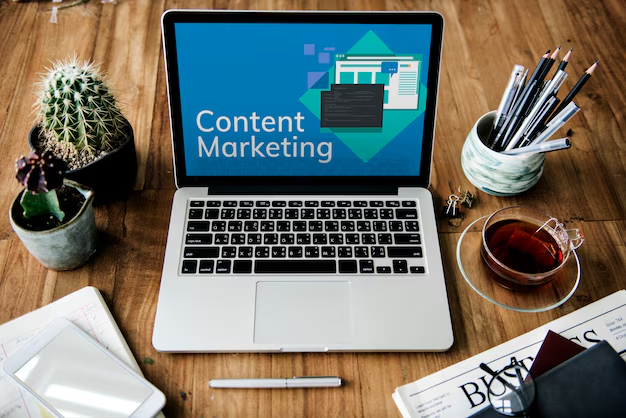
Content Creation
Produce high-quality, relevant, and valuable content based on the content plan. Ensure consistency in tone, style, and messaging across all materials.
Generate engaging and relevant ideas.
Develop content in various formats (text, images, video).
Ensure content aligns with brand voice and objectives.
Edit and refine content for quality and consistency.
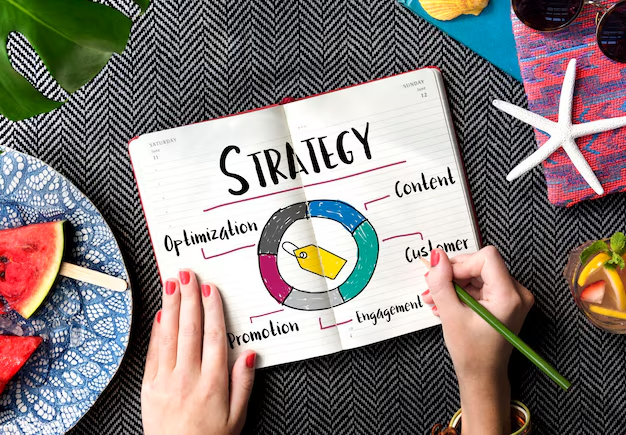
Distribution and Promotion
Implement a strategy for distributing content through appropriate channels, including social media, email, websites, and other platforms. Promote content to maximize visibility and engagement.
Select channels for content distribution (social media, email, etc.).
Schedule and publish content according to the plan.
Promote content to reach a wider audience through ads and partnerships.
Monitor engagement and adjust strategies as needed.
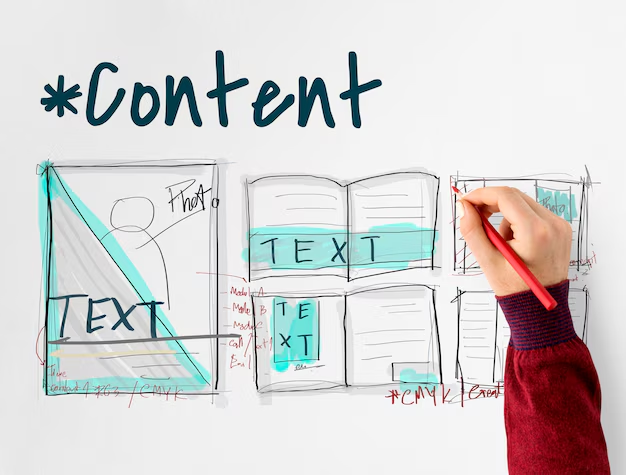
Measure and Analyze
Use analytics tools to measure the performance of content against defined objectives. Analyze data to understand audience behavior, refine strategies, and continuously improve the content strategy over time.
Track key performance metrics (KPIs).
Analyze data to assess content effectiveness.
Identify trends and insights from performance results.
Adjust strategies based on analysis to improve outcomes.
Our Approach to Design
Cool features of our UI/UX designing and development service
Intuitive User
Interface
We craft visually appealing and easy-to-navigate interfaces that guide users effortlessly through your digital product, ensuring a seamless and enjoyable experience.
User-Centered
Design
We understand users' needs and behavior, enabling us to create experiences that cater to their preferences and expectations, resulting in engaging and satisfying interactions.
Responsive and
Adaptive
Our designers design interfaces that seamlessly adapt to different devices, providing optimal viewing and interaction experiences across desktops, tablets, and smartphones.
Visual Design and
Branding
We design visually stunning interfaces that match your brand's style, using the right colors, fonts, and images for a cohesive user experience.
Interaction Design
We develop intuitive interactions that enhance user engagement, making navigation through your product effortless and efficient, resulting in a delightful user journey.
Data-Driven
Decision Making
We utilize analytics and user insights to inform design decisions, optimize user experiences, and drive continuous improvement for your digital product.

Why Choose Digitlay to Develop UI and give good experience of UX
60% faster delivery
Enterprise Ready
Effortless Deployment
Integration Made Easy
Minimalistic and Modern Design
Compliant and Secure
Reliable Contingency Plan
Effective Requirement Gathering
Industries we serve
Digitlay created results for more than 50+ industries & continuing
Healthcare
Real Estate
Finance
Education
Entertainment
Travel & Tourism
Wellness and Fitness
Technology

Some of Our Cases
See More PortfolioAlready imagined how your website or app would look like?
Technology & Tools
The technology stack for UI/UX design can vary based on the specific requirements of a project and the preferences of the design team.

Adobe Xd

Figma

Photoshop

Sketch

InVision

Miro

Maze


Get In Touch
With Us
We're here to provide you with excellent customer service. Don't hesitate to reach out to us
Email ID